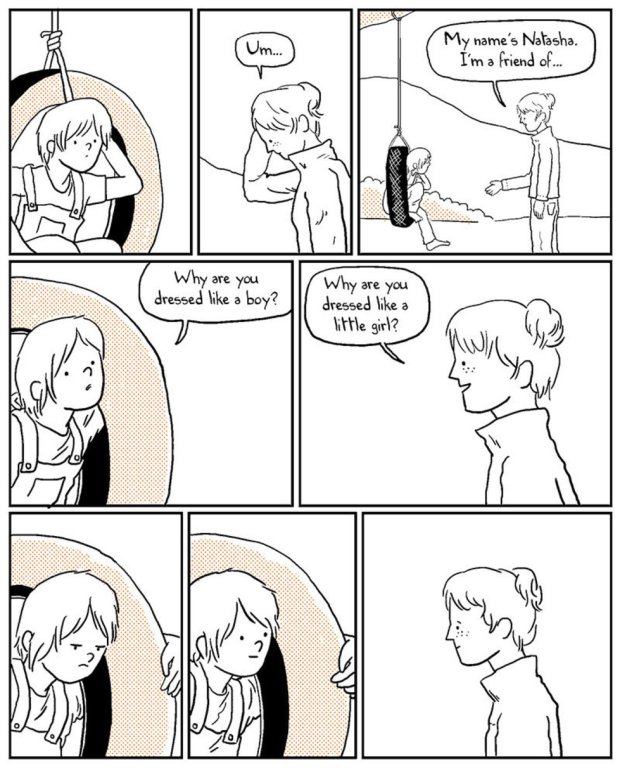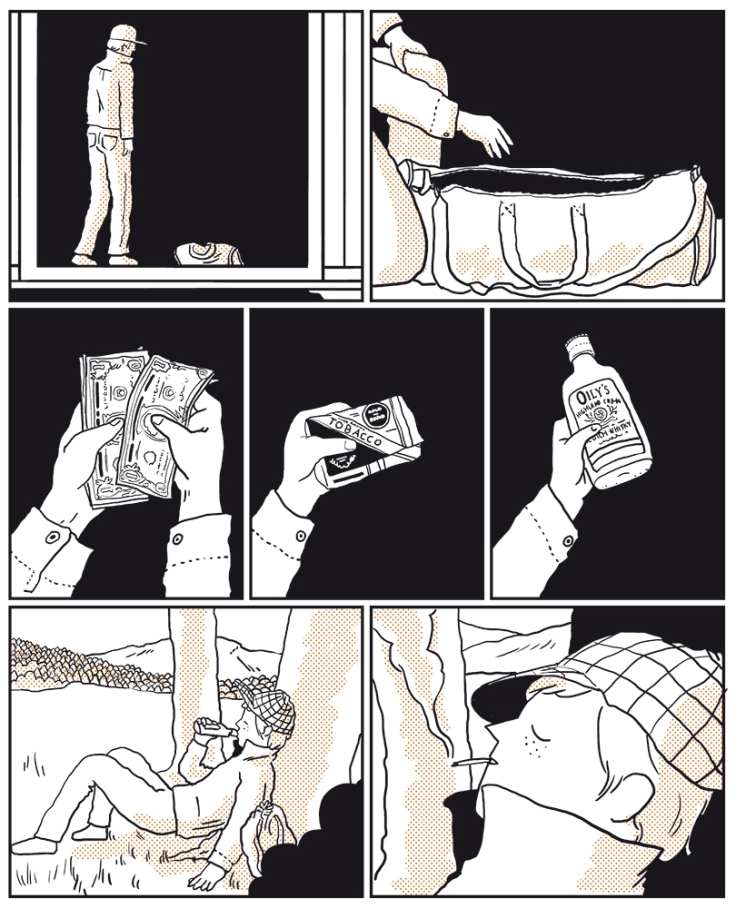A very quick note on a small yet gut-punching book.
Hobo Mom is a real surprise. Both Charles Forsman´s and Max de Radiguès solo work is, even with their expected differences, fast-paced, high-octane, genre-hopping and –savvy fun, following adroit comics strategies to create their storyworlds and immediately captivating characters.
But Hobo Mom, seemingly drawn and written in four hands, takes a slower pace, giving way to eloquent silent sequences, powerful shot reverse shot scenes, and a retarded effect on its meaning.

The story follows two simultaneous and related lifelines. On the one hand, we have Tom, a single parent, and his young daughter Sissy, whose life seems to go just fine. On the other hand, we have a homeless, vagrant woman, who seems to follow the classical “hobo” lifestyle, hopping in and off of trains, avoiding perils, and resorting to many ways of getting by and around.
This woman walks up to the young girl’s house and asks for her father. He does not seem happy to see her. Quickly, we will learn that the woman’s name is Natasha, she’s Tom’s wife and she has abandoned her settled, bourgeois, calm life, for some sort of adventurous call. The reasons are always elusive. I wonder if even Natasha, if pressed, would be able to answer in any clear way. Quite probably, she wouldn’t.

There are many other collaborative comics works that one could compare this to. Baudoin’s and Troub’s books or Dominique Goblet’s and Kai Pfeiffer’s Plus si entente are quite clear on who draws and writes what, presenting emboldening dialogues. Max Andersson and Lars Sjunnesson painstakingly completed each other’s panels in Bosnian Flat Dog to a seamless point. In this case, I’m not certain: the final drawings seem to follow de Radiguès smoother, rounder style, but I may be wrong. All in all, what’s important is the real human force conveyed by Hobo Mom.
This book raises many issues, and the fact that it is a female protagonist with the agency of leaving her family behind in the name of some sort of ideal of an unbounded life changes some tropes and invites one to poignant questions. The short story zeroes in on the emotional tensions that exist between the three characters, and how they shift repeatedly and fast thanks to one single gesture, a word, a silence. And those are the blocks that Forsman and de Radiguès play with to build incredible characters, that will haunt us for a while, after closing the book.


Deixe um comentário